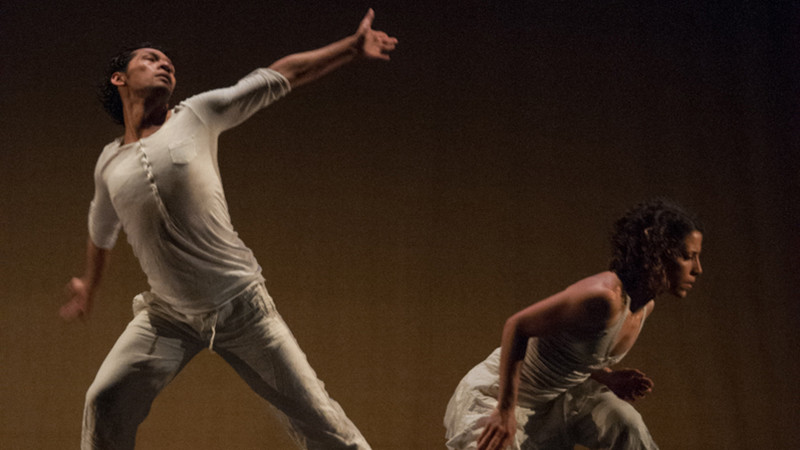The dance is performed to excerpts from “Copulation Blues 1926-1940,” a compilation of popular African American songs in the blues tradition. The collection has some of the bawdiest lyrics ever recorded, yet also rides a propulsive beat.
This year’s Draft features a rich mix of ensembles and solos. A trio for women suddenly blossoms into a sextet; eight dancers shake each other’s heads as they squeeze themselves into an ever-tightening space.
Moses spotlights the strengths of individual dancers in the solo sections: Jeremy Bannon-Neches nuzzles up to potential partners; Briana Dickinson whiplashes her spine; Carly Johnson shoots along the floor looks as if propelled by a rocket. And Karla Johanna Quintero’s elegant long limbs claim center space.
In State Space, guest choreographer Daiane Da Silva serves up a smart, fast paced quintet in which the dancers behave naturally when they aren’t maniacally driven by something akin to an internal robot on speed.
State Space looks like a game of individuality versus efficiency.
Sitting trios engage in high speed teeth brushing, belly scratching, nose picking and underarm sniffing. Then the quintet explodes into spatial chaos until some internal mechanism slows everyone down into near crawls. Next, the dancers try on new identities by exchanging their clothes.
State Space also features what must be one of the sweetest courting duets I’ve ever seen on a Bay Area stage. Holding his hand up to her face, Victor Talledos repeatedly tries to calm a screaming, shaking Norma Fong. He finally succeeds. Shuffling after her tiptoeing attempt to escape, the dancer takes her wild hair and braids it.
Guest choreographer Amy Foley’s Loom possesses its own sweetness. The piece communicates with plainspoken simplicity, much in the spirit of the recorded excerpt of poetry by Mary Oliver that opens this well-crafted but modest essay.
While the emotional range of its four movements remains tightly — perhaps too tightly — confined, Foley shows a secure and sensitive hand in the employment of dancers.
Also welcome is the addition of a contentious duet performed by Crystaldawn Bell and Delvis Savigne Frinon. The piece comes from Silt, a recent premiere by Robert Moses’ Kin. The intensity of dancers’ moilingly hot attraction and repulsion for one other could frighten anyone into a life of solitude.


